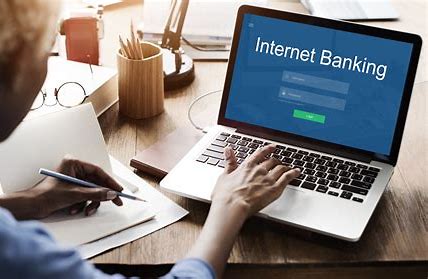
The Ultimate Guide to Online Banking: Everything You Need to Know
Online banking has transformed the financial landscape, making it easier than ever to manage your finances from virtually anywhere. This guide will provide you with everything you need to know about online banking, from its benefits and setup to security considerations and future trends.
1. What is Online Banking?
Online banking, also known as internet banking, refers to the use of a bank’s website or mobile app to perform financial transactions and manage accounts. This includes checking balances, transferring funds, paying bills, and more, all from your computer or smartphone.
Benefits of Online Banking:
Convenience: Access your account 24/7 from anywhere with an internet connection.
Cost Savings: Often, online banking offers lower fees compared to traditional banking.
Efficiency: Instant transactions and real-time updates streamline your financial management.
Enhanced Features: Access to tools for budgeting, investment, and financial planning.
2. Setting Up Online Banking
Choosing a Bank:
Research: Look for banks or credit unions with strong online platforms, competitive fees, and good customer service.
Features: Compare features like mobile check deposit, bill pay, and account management tools.
Account Setup:
Application: Apply for an account online or visit a branch.
Verification: Provide personal identification and financial information.
Login Credentials: Create a secure username and password. Set up multi-factor authentication (MFA) for added security.
3. Using Online Banking Services
Basic Functions:
Account Management: Check balances, view transaction history, and manage account settings.
Transfers: Move funds between accounts or send money to other individuals or institutions.
Bill Payments: Schedule and pay bills directly from your account.
Advanced Features:
Mobile Deposits: Deposit checks using your smartphone’s camera.
Investment Management: Access investment accounts and financial planning tools.
Personalized Alerts: Set up notifications for account activity, due dates, and balances.
4. Security and Privacy
Best Practices:
Use Strong Passwords: Create unique, complex passwords and update them regularly.
Enable MFA: Utilize multi-factor authentication to enhance account security.
Secure Devices: Keep your computer and mobile devices protected with antivirus software and avoid public Wi-Fi for banking.
Monitoring and Fraud Prevention:
Review Statements: Regularly check account statements for unauthorized transactions.
Report Suspicious Activity: Immediately notify your bank if you notice any unusual activity.
Data Privacy:
Understand Policies: Be aware of how your bank uses and protects your personal data.
Opt for Secure Sites: Ensure you are using encrypted (HTTPS) websites for transactions.
5. Common Online Banking Tools and Features
Budgeting Tools:
Expense Tracking: Monitor spending and categorize transactions.
Savings Goals: Set up and track progress towards financial goals.
Customer Support:
Chatbots: Use AI-driven chat services for quick answers to common questions.
Live Support: Access live chat or video banking for personalized assistance.
Integration:
Third-Party Apps: Link your bank account with budgeting or investment apps for a comprehensive view of your finances.
6. Future Trends in Online Banking
Artificial Intelligence (AI) and Machine Learning:
Personalized Advice: AI can offer tailored financial recommendations and insights.
Fraud Detection: Advanced algorithms help detect and prevent fraudulent activities.
Blockchain and Cryptocurrencies:
Secure Transactions: Blockchain technology enhances transaction security.
Digital Currencies: Explore how cryptocurrencies might integrate with traditional banking.
Open Banking:
Data Sharing: Regulations like PSD2 in Europe enable secure data sharing between banks and third-party providers, fostering innovation.
Enhanced User Experience:
Voice Banking: Use voice commands to manage your accounts.
Virtual Reality (VR) Banking: Experience immersive banking environments in the future.
7. Tips for Maximizing Your Online Banking Experience
Stay Informed: Regularly check for updates and new features offered by your bank.
Leverage Tools: Use available financial management tools to optimize your banking experience.
Educate Yourself: Continuously learn about new technologies and best practices in online banking.
Online banking offers a wealth of opportunities for managing your finances more efficiently and effectively. By understanding how to set up and use online banking, prioritizing security, and staying informed about future trends, you can make the most of this powerful tool and stay ahead in the financial world.